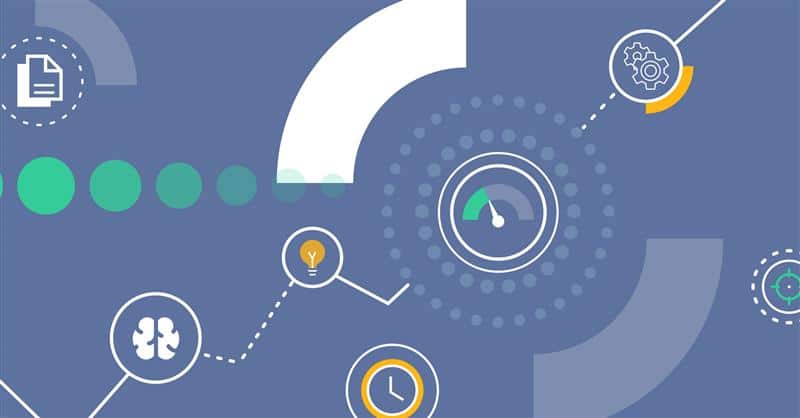Introduction
Around 69% of employees say they work harder if the organization recognizes their efforts, while 75% consider feedback critical and valuable for their work. Almost all organizations tend to collect employee feedback, but efficiently utilizing it is the key to achieving its true potential.
That’s why organizations must ensure effective feedback management, as it is directly linked to business growth. But how to manage recurring manager-employee performance appraisals effectively? This is where BPM (Business Process Management) software comes into action.
BPM software provides a strategic system to gather, manage, analyze, and utilize employee feedback. Therefore, this guide is going to talk in detail about the significance of feedback management and the crucial role BPM software can play in the feedback management process.
What is feedback management, and why is it crucial?
Employee feedback is the information, suggestions, and comments employees receive about their performance and skills. So, feedback management is the process of collecting, analyzing, and utilizing the feedback managers provide about employees.
Different organizations have different ways of collecting employees’ feedback. Some do annual assessments, while others do semi-annually or quarterly assessments. Therefore, feedback management is necessary to gather and utilize the feedback effectively.
When managed effectively, feedback leads to continuous improvement, employee engagement, product/service quality improvement, and much more. Simply put, feedback management can lead to performance improvement, which will directly contribute to business success.
For instance, the manager gave feedback about employee John that his Python coding skills are weak and imperfect. Based on the feedback, John can be provided with a Python-related training course. This will help him improve his skills and deliver more quality work. This is just one example of why feedback management is crucial for employees’ growth and business success.
BPM software as a tool for feedback management
Business Process Management (BPM) software helps organizations create, execute, automate, monitor, and improve specific business processes. It helps to turn time-consuming manual processes into structured and automated workflows. As per the NIST Manufacturing Extension Partnership, BPM leads to a 50% increase in productivity, a 40% increase in revenue, and an 80% increase in quality.
In the context of feedback management, BPM software helps streamline and automate the process. It provides a centralized way to collect and analyze feedback, create action plans, and continuously monitor and improve processes.
To help better understand what role BPM software can play in feedback management, let’s consider an example. Consider that an IT company is currently collecting semi-annual performance appraisals, but the process is manual. So, the main problem the company is facing is:
- Delayed feedback collection due to manual process
- Lack of data insights
- Delayed actions
- Lack of proper way to monitor the action plan
Once the company starts using the Qflow BPM software, here’s how things will be improved:
Streamlined feedback collection and storage
BPM software helps to streamline feedback collection. Managers can fill in digital feedback forms, while the responses are stored in a central data repository.
Feedback analysis
The company can utilize the BPM software’s analytics tools to analyze the feedback and find key insights from the data. For example, it may highlight that the managers are concerned with employees’ incorrect use of Scrum practices.
Action plan and workflow creation
The BPM software allows the company to create an action plan according to the problems identified by feedback analysis. From the above example, the company can create the workflow for training employees with Scrum principles and best practices. Moreover, BPM software will help to assign responsibilities and set deadlines.
Monitoring
The company can utilize BPM to monitor the progress of its action plans.
This way, BPM software eradicates the problems the IT company was facing with the manual feedback process. It empowers the company to have a centralized and automated way to manage feedback effectively.
Benefits of using BPM software in feedback management
BPM software brings the structure, automation, and continuous monitoring/improvement organizations need today. Specifically for recurring manager-employee performance appraisals management, below are the key benefits of using the BPM solution:
Standardized feedback collection
BPM software empowers the organization to standardize the feedback collection process. They can use digital fillable forms and automate the process of collecting feedback at a central database. This saves a lot of manual effort and avoids the necessary delays.
Time-saving
One of the significant benefits of utilizing BPM software in feedback management is time-saving. From manual collection and analysis to automated workflows and action plans, BPM software saves time significantly. All the tedious manual processes of feedback management are automated and streamlined with the BPM tool.
Employee satisfaction and performance improvement
As mentioned earlier, 75% of employees believe that receiving feedback is valuable. When employees witness a standardized and effective feedback collection, analysis, and monitoring experience, it improves their satisfaction and confidence. This makes them more skilled and productive.
Deep insights
BPM software includes analytics features that help extract key insights from the collected data, such as employees’ strengths, weaknesses, improvement areas, appreciation points, and overall trends in the feedback. This helps to identify valuable information from collected data quickly.
Effective action plans
Based on the valuable insights BPM software provides, the organization can set up effective action plans that can guarantee valuable outcomes in the long run. For instance, if employees’ communication skills are weak, the organization can set up action plans accordingly, such as training sessions, communication workshops, etc.
Customization
Another beauty of BPM software is that it is easily customizable based on every organization’s needs. For instance, the Qflow BPM tool allows organizations to define, automate, and manage specific business processes. So, the customization makes it easy for organizations to tailor the feedback management processes to their specific appraisal cycles, performance metrics, etc.
How to implement a BPM solution for feedback management?
All the benefits of BPM software for feedback management look attractive in today’s competitive era, but the important question is how to implement a BPM solution. So, let’s make this implementation simple by presenting a step-by-step approach to implementing BPM software:
Step 1. Set the goals
The first thing is to pinpoint the goals you want to achieve by implementing BPM software for feedback management. Specify what key targets you want to accomplish, such as automating feedback collection, centralizing feedback data, conducting feedback analysis, etc.
Step 2. Search and pick the best BPM software
Explore the different BPM software that can assist in your feedback management process. You should evaluate the features of the software based on the goals you want to achieve with it. It is recommended to try the free trial of a few shortlisted tools and then make a final decision.
Qflow is an ideal BPM tool for feedback management that allows you to automate all or specific stages of feedback management. In addition, you get a prolonged 3-month free trial. So, shortlist a few tools and make the right decision.
Step 3. Design workflows
Use the BPM software to design the workflows. This can be about collecting feedback, storing it in a centralized repository, automatic routing, etc.
Step 4. Analyze data and create action plans
Use the analysis features of the BPM tool to analyze the collected data and identify trends, improvement areas, etc. Based on that, create action plans.
Step 5. Execute action plans and monitor/iterate/improve
Execute the action plans as required. Afterward, monitor the progress of the action plans and iterate/improve the processes accordingly.
That’s it! This way, a BPM software solution helps to streamline the feedback management process and empowers organizations to extract the true potential of recurring manager-employee performance appraisals.
Conclusion
Considering the fast-paced and digitalized business era, the use of BPM software has become crucial for businesses today to streamline and automate their various processes. Since feedback management is necessary to improve employees’ productivity, BPM software helps create the right action plan that expedites the outcomes of feedback.






